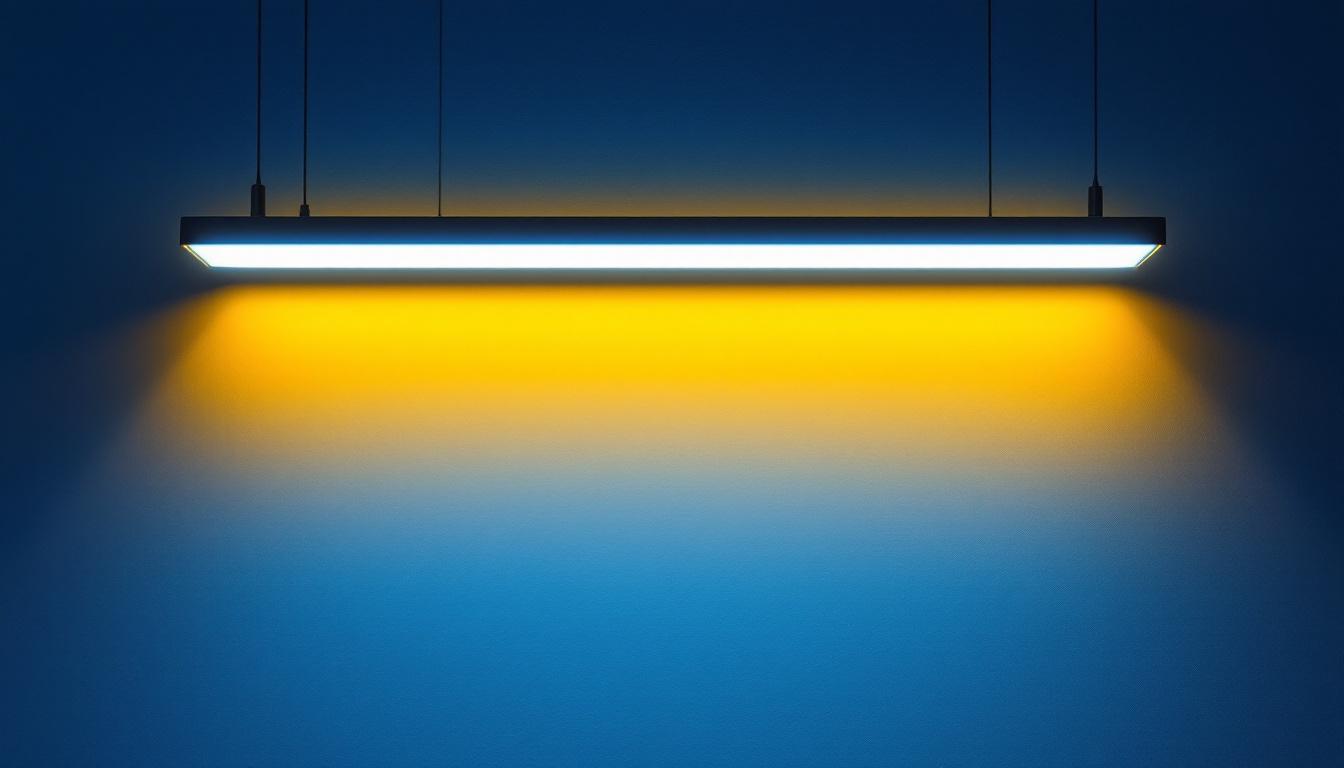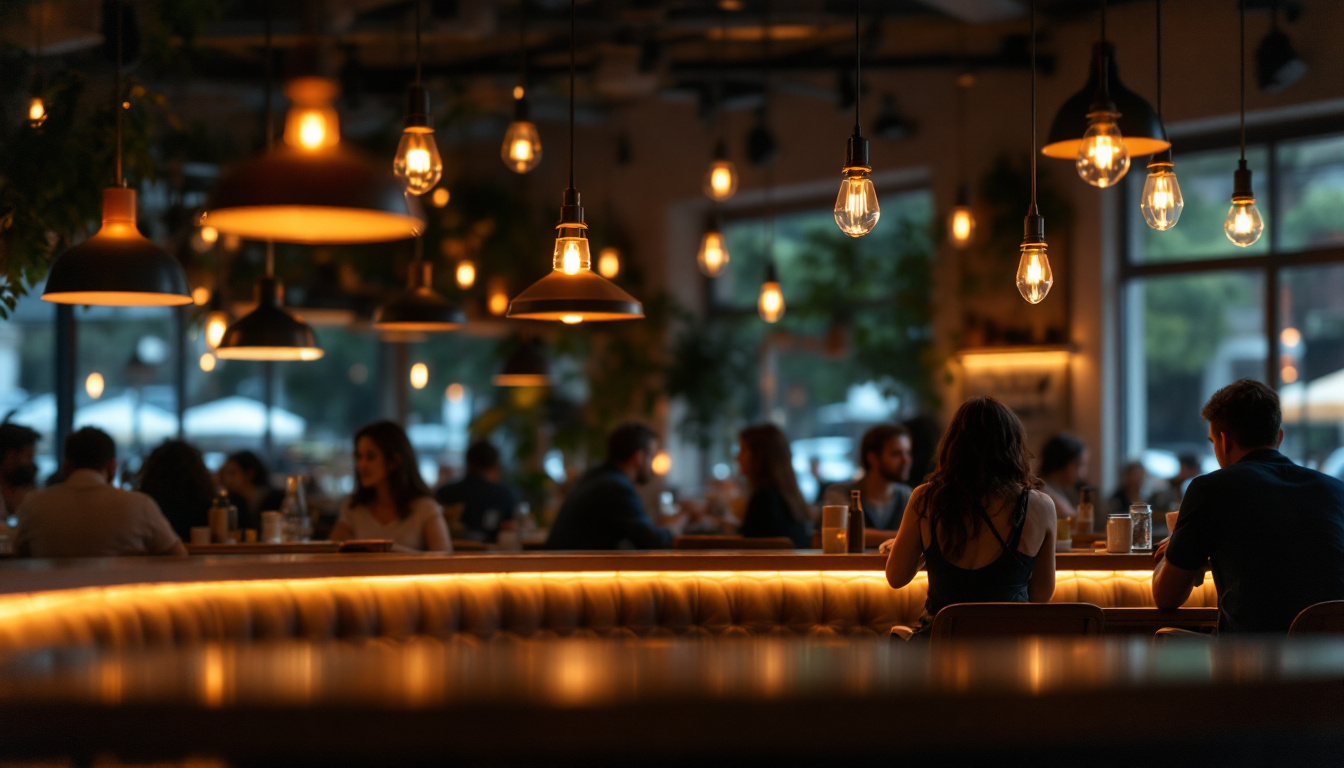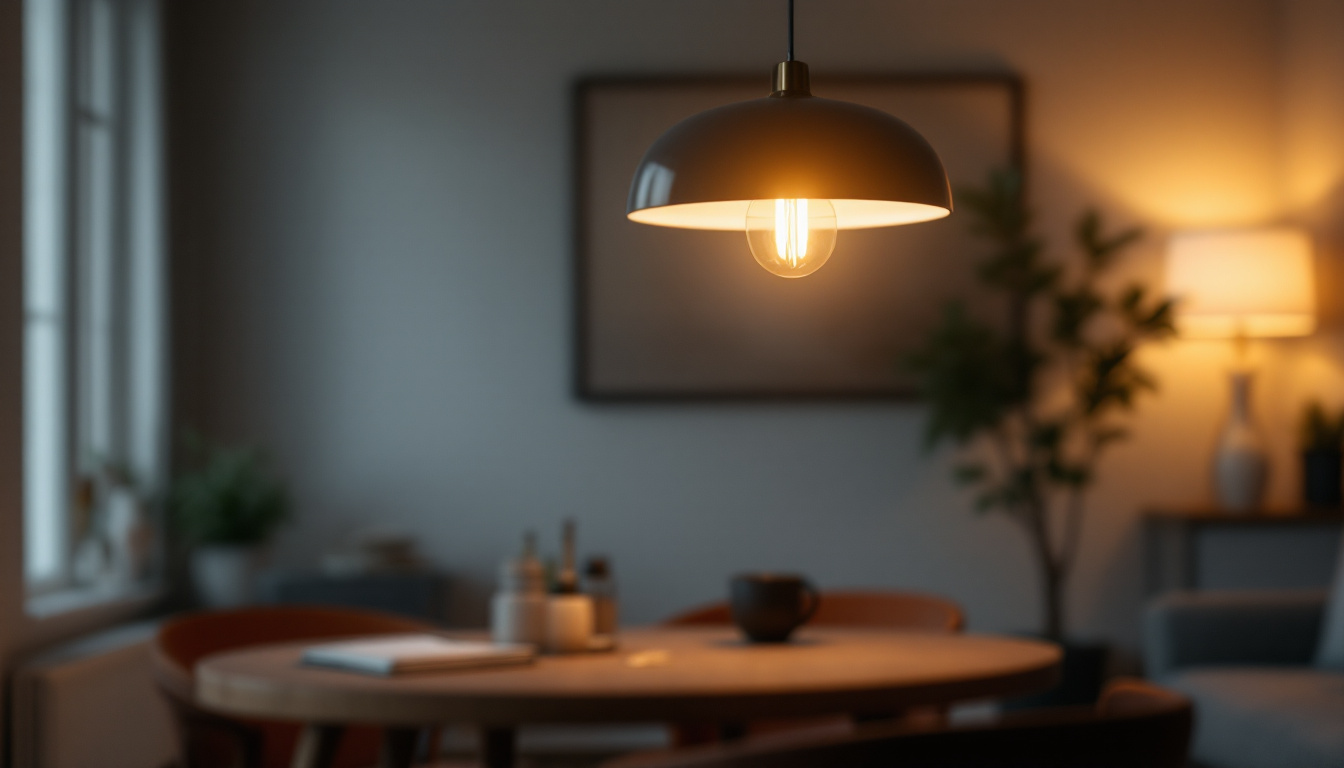
Suspended linear LED light fixtures have become a staple in modern commercial, industrial, and even residential lighting design. Their sleek, elongated form factor combined with energy-efficient LED technology offers a versatile solution for a wide range of applications. For lighting contractors, understanding how to optimize these fixtures for maximum efficiency is essential—not only to meet client expectations but also to contribute to sustainable building practices.
These fixtures are typically mounted from ceilings using cables or rods, allowing them to hang at a desired height. This suspended installation method provides excellent light distribution and can enhance the architectural aesthetics of a space. However, achieving optimal efficiency requires more than just installation; it involves careful consideration of fixture selection, placement, controls, and maintenance.
One of the key advantages of suspended linear LED fixtures is their ability to create a uniform light spread across large areas, which is particularly beneficial in environments like open offices, retail spaces, and warehouses. By utilizing advanced optics and diffusers, these fixtures minimize glare while maximizing illumination, ensuring that every corner of a room is adequately lit. Additionally, many models come with adjustable color temperatures, allowing users to customize the ambiance according to the specific needs of the space, whether it be a warm, inviting glow for a restaurant or a bright, focused light for a workspace.
Moreover, the integration of smart lighting controls has revolutionized the functionality of suspended linear LED fixtures. With options for dimming, occupancy sensors, and daylight harvesting, these systems not only enhance user comfort but also significantly reduce energy consumption. For instance, occupancy sensors can automatically turn off lights in unoccupied areas, while daylight harvesting adjusts the artificial light output based on the amount of natural light available, creating a more energy-efficient environment. As technology continues to evolve, the potential for integrating these fixtures with building management systems promises to further streamline operations and improve energy efficiency in both new constructions and retrofits.
LEDs inherently consume less energy compared to traditional lighting sources such as fluorescent or incandescent bulbs. Suspended linear LED fixtures leverage this advantage by delivering high lumen output with low wattage. The efficacy of these fixtures, measured in lumens per watt (lm/W), is a critical metric for lighting contractors to evaluate. Modern linear LEDs can achieve efficacies exceeding 150 lm/W, which translates to significant energy savings over the fixture’s lifespan.
Moreover, LED technology offers superior longevity, often rated for 50,000 hours or more. This reduces the frequency of replacements and maintenance costs, further enhancing overall efficiency. However, the quality of the LED chips, driver components, and thermal management within the fixture all influence actual performance. The thermal management system is particularly crucial, as excessive heat can degrade LED performance and lifespan. Advanced designs incorporate heat sinks and thermal conductive materials to dissipate heat effectively, ensuring that the LEDs operate within their optimal temperature range. This not only prolongs their life but also maintains consistent light output over time, a key factor for environments where lighting quality is paramount, such as in art galleries or retail spaces.
The design of a suspended linear LED fixture plays a pivotal role in light distribution and efficiency. Fixtures with well-engineered optics can direct light precisely where it is needed, minimizing wasted light and glare. Diffusers, lenses, and reflectors are integral components that affect beam angle and uniformity.
For example, a fixture with a narrow beam angle is ideal for task lighting, focusing light on work surfaces, while a wider beam angle suits general ambient lighting. Lighting contractors should assess the specific application requirements to select fixtures with appropriate optical characteristics. Efficient optical design not only improves visual comfort but also reduces the number of fixtures needed to achieve target illuminance levels. In addition, advancements in optical technology, such as the use of micro-prismatic lenses, can enhance light diffusion while maintaining high efficiency. This innovation allows for a softer light quality that minimizes harsh shadows, making it particularly beneficial in spaces like offices and educational institutions where prolonged exposure to lighting can cause eye strain. Furthermore, the aesthetic aspect of fixture design cannot be overlooked; sleek, modern designs can complement contemporary architecture, adding to the overall ambiance of a space while providing functional lighting solutions.
The height at which suspended linear LED fixtures are installed significantly impacts their efficiency. Mounting fixtures too high may necessitate higher lumen outputs to compensate for light loss, increasing energy consumption. Conversely, mounting them too low can cause glare and uneven lighting.
Lighting contractors should calculate the optimal mounting height based on room dimensions, ceiling height, and the intended use of the space. Equally important is the spacing between fixtures. Uniform spacing ensures even light distribution and prevents dark spots or overlit areas. Utilizing lighting simulation software can aid in determining the best layout for maximum efficiency. Additionally, considering the color temperature of the LEDs is crucial; warmer tones can create a cozy atmosphere in residential settings, while cooler tones are often preferred in commercial spaces for a more vibrant and alert environment.
Moreover, the integration of smart lighting controls can significantly enhance efficiency. By incorporating sensors that adjust lighting based on occupancy or natural light availability, energy consumption can be further minimized. This approach not only optimizes the installation but also contributes to sustainability goals, making it an attractive option for both residential and commercial projects.
Aligning suspended linear LED fixtures parallel or perpendicular to work surfaces or architectural elements can enhance lighting effectiveness. For instance, in office environments, fixtures oriented parallel to desks reduce shadows and improve task visibility. In retail settings, alignment with aisles or display cases can highlight merchandise more effectively.
Proper orientation also influences how light interacts with surfaces, affecting perceived brightness and ambiance. Lighting contractors should collaborate with designers and clients to ensure fixture alignment complements the space’s function and aesthetics while maximizing energy efficiency. Furthermore, the use of reflectors or diffusers can enhance the distribution of light, softening harsh edges and creating a more inviting atmosphere. This is particularly beneficial in spaces where comfort and visual appeal are paramount, such as restaurants or hospitality venues.
In addition, considering the impact of fixture finishes can play a significant role in the overall lighting design. Matte finishes can help reduce glare, while polished surfaces can enhance brightness and create a more dynamic visual effect. By thoughtfully selecting both the orientation and finish of the fixtures, lighting professionals can create a cohesive and functional lighting scheme that meets the needs of the space while also elevating its aesthetic appeal.
Integrating smart controls with suspended linear LED fixtures is a powerful strategy to optimize energy use. Daylight harvesting systems adjust artificial lighting based on the amount of natural light available, reducing unnecessary energy consumption during daylight hours. Occupancy sensors automatically turn lights on or off depending on room occupancy, preventing energy waste in unoccupied spaces.
For lighting contractors, specifying fixtures compatible with these control systems is crucial. Wireless controls and IoT-enabled lighting solutions offer flexibility and ease of installation, enabling clients to monitor and manage lighting remotely. These technologies not only improve efficiency but also contribute to building certification goals such as LEED or WELL standards.
Dimming capabilities allow for adjusting light intensity to match specific needs, further enhancing energy savings. Zoning divides a space into distinct lighting areas controlled independently, enabling tailored lighting scenarios. For example, a conference room might have brighter lighting during meetings and dimmed settings for presentations.
Suspended linear LED fixtures equipped with dimmable drivers and compatible with advanced control systems provide lighting contractors with the tools to create dynamic, efficient lighting environments. Proper programming and commissioning of these systems are essential to realize their full potential.
Dust and dirt accumulation on fixtures can reduce light output by up to 30%, undermining efficiency. Suspended linear LED fixtures, often installed at heights, require scheduled cleaning to maintain optimal performance. Lighting contractors should advise clients on appropriate maintenance intervals and procedures.
Inspection of fixture components, including drivers and mounting hardware, helps identify potential issues before they affect performance or safety. Preventive maintenance extends fixture lifespan and ensures consistent lighting quality.
Many buildings still rely on older fluorescent or HID lighting systems. Retrofitting these with suspended linear LED fixtures can yield immediate efficiency gains. Lighting contractors should evaluate existing installations for compatibility and recommend upgrades that minimize disruption.
In some cases, retrofitting may involve reconfiguring fixture layouts or integrating new control systems. Providing clients with a comprehensive plan that includes energy savings projections and return on investment analysis supports informed decision-making.
A mid-sized commercial office replaced its outdated fluorescent troffers with suspended linear LED fixtures featuring high-efficacy LEDs and integrated daylight sensors. The retrofit resulted in a 40% reduction in lighting energy consumption and improved occupant satisfaction due to enhanced light quality and reduced flicker.
The project also benefited from reduced maintenance costs and a more modern aesthetic, demonstrating how optimizing suspended linear LED lighting can deliver multifaceted value.
An industrial warehouse upgraded its high-bay metal halide fixtures to suspended linear LED fixtures with wide beam optics and occupancy sensors. The new lighting system provided uniform illumination across work zones, enhancing safety and productivity.
Energy consumption dropped by over 50%, and the long lifespan of LEDs minimized downtime associated with lamp replacements. This example highlights the importance of selecting fixtures tailored to the specific operational environment.
Suspended linear LED light fixtures offer a compelling combination of energy efficiency, design flexibility, and performance. For lighting contractors, optimizing these fixtures involves a holistic approach—from selecting high-quality components and designing layouts to integrating smart controls and ensuring proper maintenance.
By leveraging the latest LED technologies, understanding optical and installation principles, and embracing intelligent control systems, contractors can deliver lighting solutions that meet client needs while advancing sustainability goals. Continuous education on emerging trends and technologies will further empower contractors to stay at the forefront of efficient lighting design.
Ready to elevate your lighting projects with the efficiency and elegance of suspended linear LED light fixtures? At LumenWholesale, we provide lighting contractors with the finest spec-grade lighting solutions at unbeatable wholesale prices. Our commitment to quality and affordability ensures that you can access the latest in LED technology without the burden of inflated costs. With free shipping on bulk orders, LumenWholesale is your go-to source for premium lighting that meets the highest industry standards. Don’t compromise on performance or price. Discover wholesale lighting at the best value and bring your lighting designs to life with LumenWholesale.

Discover the key elements of cafe lighting that every contractor should know.

Discover the latest trends in solar landscaping lights that every lighting contractor needs to know.

Discover the essential guide to 4 recessed LED can lights tailored for lighting contractors.

Discover innovative strategies from top lighting contractors on selecting and installing pendant lighting fixtures.